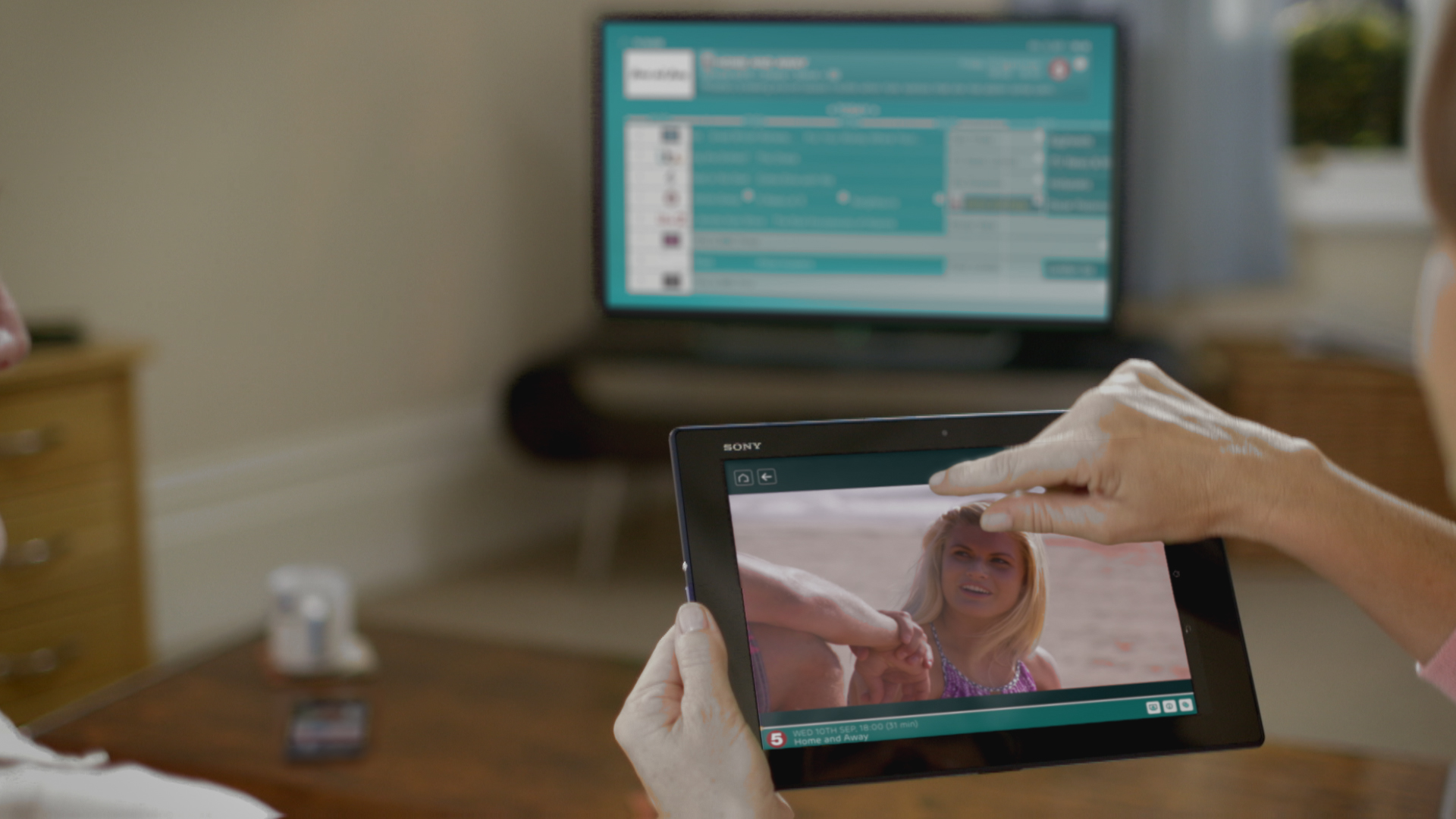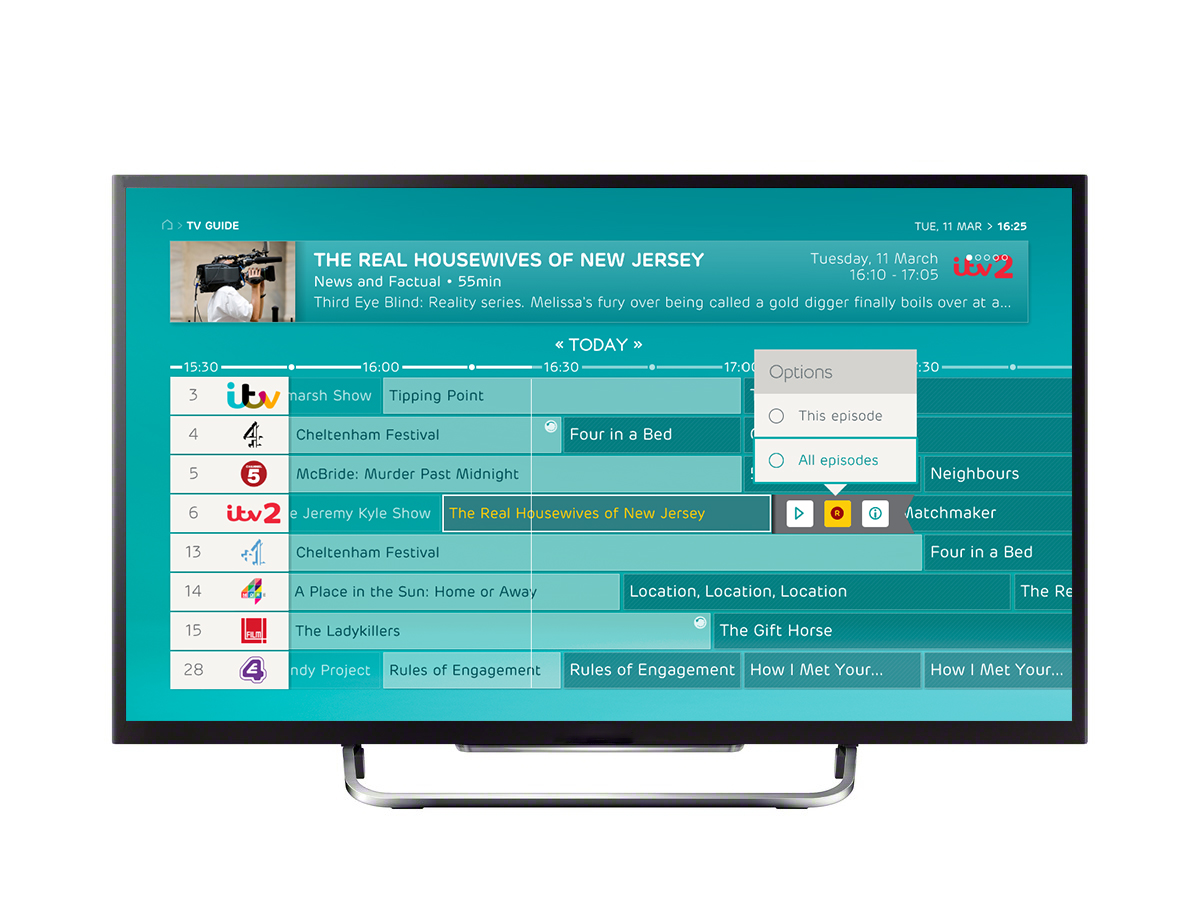Matt Walters – @matthew_walters – matt.walters@decipher.co.uk
Everything Everywhere, the UK’s largest mobile network with around 25m mobile customers, announced a little over three weeks ago the imminent launch of EE TV – a connected set-top box, complete with over 70 Freeview channels and a number of VOD players. It will be free to all EE mobile customers who already are, or sign up to become, EE Broadband customers (of which there are currently just over three-quarters of a million).
Strip away the fact that a user will be able to control their EE TV box via mobile or tablet apps (iOS and Android only, at least for the moment), leave aside the box’s substantial 1TB recording capacity (half the size of the latest, and largest, Sky+HD box), and a couple of small – but potentially very significant – features have got us all thinking here at Decipher: its ‘Replay’ recording capability and its potential multi-screen use of its customer data, to which we’ll return a little later.
A Six-Way ‘Replay’
 The EE TV box (pictured left), complete with four HD-standard tuners, will allow users – to quote the EE press release – to watch “four different programmes, in four different rooms, on four different devices” all at the same time over a household’s Wi-Fi connection and streamed (“flicked”) from the EE TV box (see photograph, below).
The EE TV box (pictured left), complete with four HD-standard tuners, will allow users – to quote the EE press release – to watch “four different programmes, in four different rooms, on four different devices” all at the same time over a household’s Wi-Fi connection and streamed (“flicked”) from the EE TV box (see photograph, below).
EE isn’t the first company to offer the ability to experience such “whole home” viewing (in their own ways, the Swedish Magine and AT&T’s “total home DVR” in the US spring to mind). In the UK both Virgin and BSkyB have started to allow limited streaming of live channels to their tablet apps. But the EE service is the first comprehensive service which allows multiple devices to access live and is the first to really make a play of this kind via a non-subscription PVR.
 Nevertheless, what’s most exciting for us is the device’s “Replay” network PVR feature: this allows a user to nominate six channels for which the EE TV box will record their last 24 hours of programming
Nevertheless, what’s most exciting for us is the device’s “Replay” network PVR feature: this allows a user to nominate six channels for which the EE TV box will record their last 24 hours of programming onto the hard drive. In a stroke this blurs the lines between what we’ve come to know as “time-shifted” and “VOD” content. Our initial technical understanding is that these six channels can be recorded via the box’s four tuners, each “tuned” to a particular multiplex – and recording multiple channels from a single multiplex if required. To take a practical example, this would allow – say – a soap opera fan to ask the EE TV box to record BBC1, ITV, Channel 4, and Channel 5 for 24 hours in order to watch every episode (and, no doubt, the occasional repeat) of Eastenders, Coronation Street, Hollyoaks and Neighbours the following day, bypassing the need to visit any of their respective catch-up players altogether.
onto the hard drive. In a stroke this blurs the lines between what we’ve come to know as “time-shifted” and “VOD” content. Our initial technical understanding is that these six channels can be recorded via the box’s four tuners, each “tuned” to a particular multiplex – and recording multiple channels from a single multiplex if required. To take a practical example, this would allow – say – a soap opera fan to ask the EE TV box to record BBC1, ITV, Channel 4, and Channel 5 for 24 hours in order to watch every episode (and, no doubt, the occasional repeat) of Eastenders, Coronation Street, Hollyoaks and Neighbours the following day, bypassing the need to visit any of their respective catch-up players altogether.
At the moment, the EE box stores all this content on the hard drive, not out in the cloud. However, this functionality is till highly contentious (witness the court case over the Dish Networks ‘Primetime’ functionality in the US). It blurs the line between PVR functionality and VOD and is likely to requires the permission of the broadcasters.
The known unknown: customer data
The potential in EE TV doesn’t stop at the PVR functionality. EE TV presents EE with an opportunity to integrate its mobile/broadband customer data with EE TV usage data. If it was to do this, it would break new ground for free-to-air products in the UK, giving EE the chance to create new and interesting insight and advertising formats that could be offered to marketers. General campaigns could be offered by marketers to households on shared screens, whilst tailored messages could be delivered to individuals in the household on their personal devices.
Creating ad campaigns crossing TV and mobile in a synchronised, measurable way would be groundbreaking: Sky AdSmart aside, the UK TV industry has made remarkably little use of its customer data, either for its own marketing needs, or in creating targeted and addressable advertising products. It’s not clear whether EE can deliver this, at least not yet, but bridging the distinction between users and audiences would be both a technical and marketing achievement that would truly mark out the EE box as new and different – both to users and to marketers.
Some final thoughts
There are lots of caveats to stress when it comes to EE TV. The product is yet to launch, though EE has assured the market and its customers that it will be available “in the coming weeks”. It will be available only to EE customers, and even then will only be free for EE mobile customers also taking an EE home broadband subscription – a small proportion of the total television-watching population at best. It seems at the outset that no premium pay channels will be available, though that’s not to preclude their possible eventual availability (almost certainly via IP). And not all of the major catch up and VOD services will be available initially (BBC iPlayer, Demand 5, YouTube and wuaki.tv are confirmed), though EE assure us that “further partners…will be announced in the coming months”.
What the EE TV announcement does confirm to us is that the concept of the connected PVR appears to be in rude health: for the first time in the UK, a PVR now offers a “whole home”, Wi-Fi-enabled, cross-device live viewing experience on par with those enjoyed by some US consumers. Not only that, the reality of the connected, converged network PVR – where the only distinction a user will need to make is between content and channels, rather than between storage on their box or in the cloud – is growing ever nearer. A largely unexpected, perhaps surprising, product launch, but potentially a telling one at that.
Matt Walters – @matthew_walters – matt.walters@decipher.co.uk
Note: We’re doing some more thinking about the upcoming launch of the EE TV set-top box. Check back soon for a Decipher White Paper on the EE TV launch.
